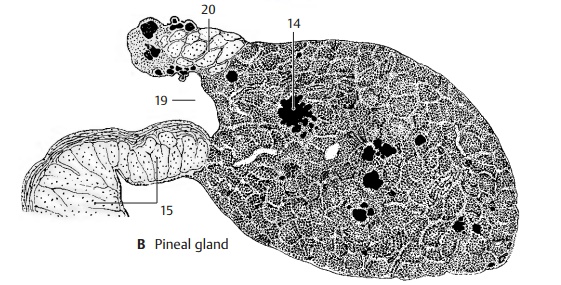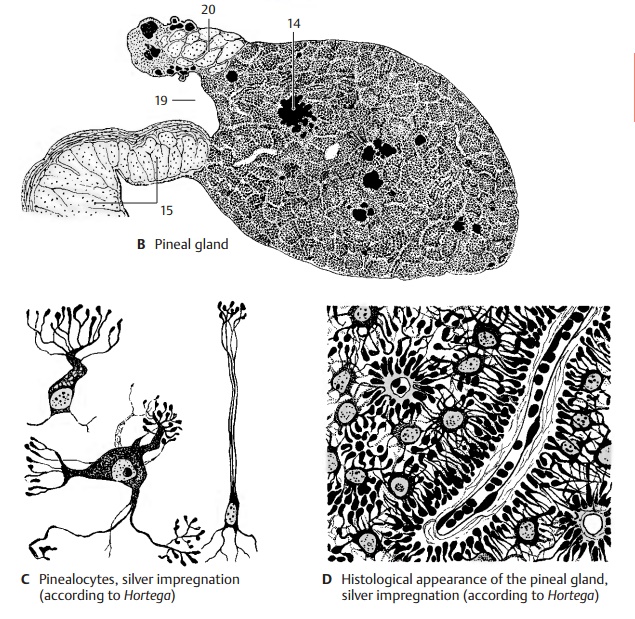Chapter: Human Nervous System and Sensory Organs : Diencephalon
Pineal Gland - Epithalamus

Pineal Gland
The pineal gland (pineal body, epiphysiscerebri) (A13,B), is a small peg-shaped bodyat the posterior wall of the third ventricle above the quadrigeminal plate. Its cells, the pinealocytes, are grouped into lobules by connective tissue septa. Insilver-impregnated sections, they show long processes with club-shaped terminal swellings (C), which terminate predomi-nantly at blood vessels (D). In adults, the pineal gland contains large foci of calcifica-tion (B14), which are visible on radiographs.

In lower vertebrates, the pineal gland is a photo-sensitive organ; it registers changes from light to dark either by a special parietal eye or just by the light penetrating through the thin roof of the skull. By doing so, it influences the day and night rhythm of the organism. For example, it regulates the color change in amphibians (dark pigmenta-tion during the day, pale pigmentation at night) and the corresponding change in the animal’s be-havior. The pineal gland also registers the trans-ition from bright summertime to dark wintertime and thus brings about seasonal changes in the gonads.
In higher vertebrates, the light does not penetrate the thick roof of the skull. The rhythm of day and night is transmitted to the pineal gland through the following route: via retinal fibers to the su-prachiasmatic nucleus in the hypothalamus, then via efferent hypothalamic fibers to the interme-diolateral nucleus. and finally via postganglionic fibers of the cervical sympathetic chain to the pineal gland.
In humans, the pineal gland is thought to inhibit maturation of the genitals until puberty. As in an-imals, it is supposed to have an antigonadotropic action. Hypergonadism has been observed in some cases of pineal gland destruction in children.
Epithalamic commissure (posterior com-missure) (B).Not all fiber systems that passthrough the epithalamic commissure (B15) are known. Habenulotectal fibers cross in it. From the various pretectal nuclei that send fibers through the commissure, the intersti-tial nucleus of Cajal and Darkshevich’s nu-cleus are the most important ones. Vestibu-lar fibers are also thought to cross in this commissure.
B19 Pineal recess.
B20 Habenular commissure.
Related Topics